Simplified Version of How Bitcoin Works
To deeply understand the foundational structure of blockchain, I want to start from the simplest scenario.
After all, if you try to transmit a huge amount of knowledge into a human brain all at once, the transfer might fail.
Let’s imagine a world where only three computers are running the Bitcoin system.
These three computers are connected via the internet and exchange information.
Feature 1: Every 10 minutes, one computer finds a new block and broadcasts it to the others
Below, I’ll demonstrate how the very first block is created:
Step 1: Time is 9:00. At this point, no blocks exist.

Step 2: Time is 9:10. The bottom computer finds a block and broadcasts it to the other two.
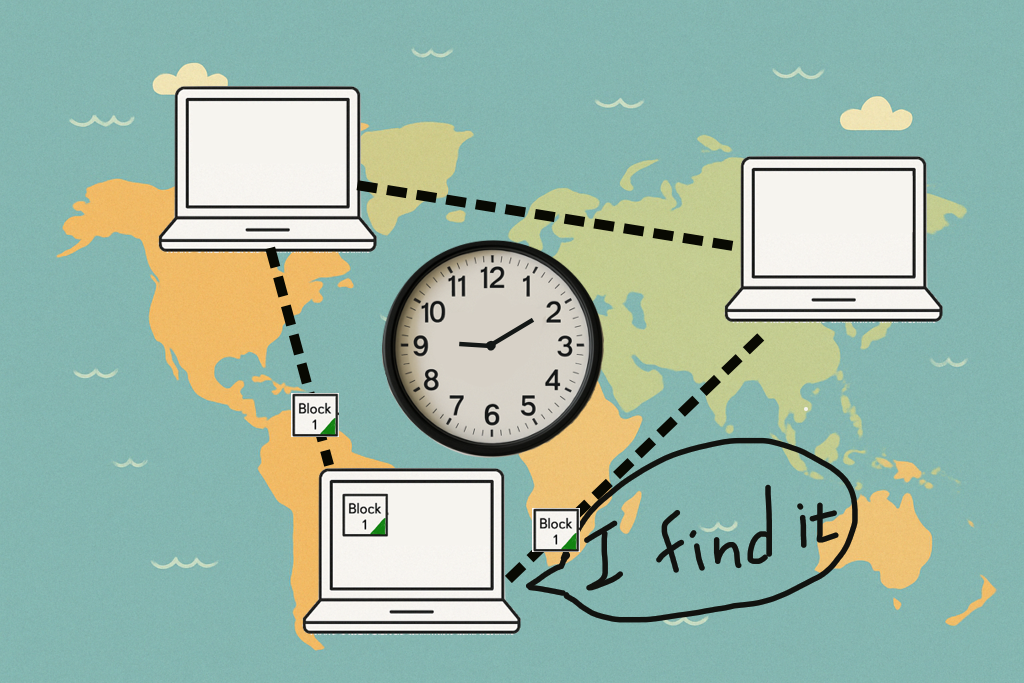
Step 3: Time is 9:11. The first block is being transmitted to the other two computers.
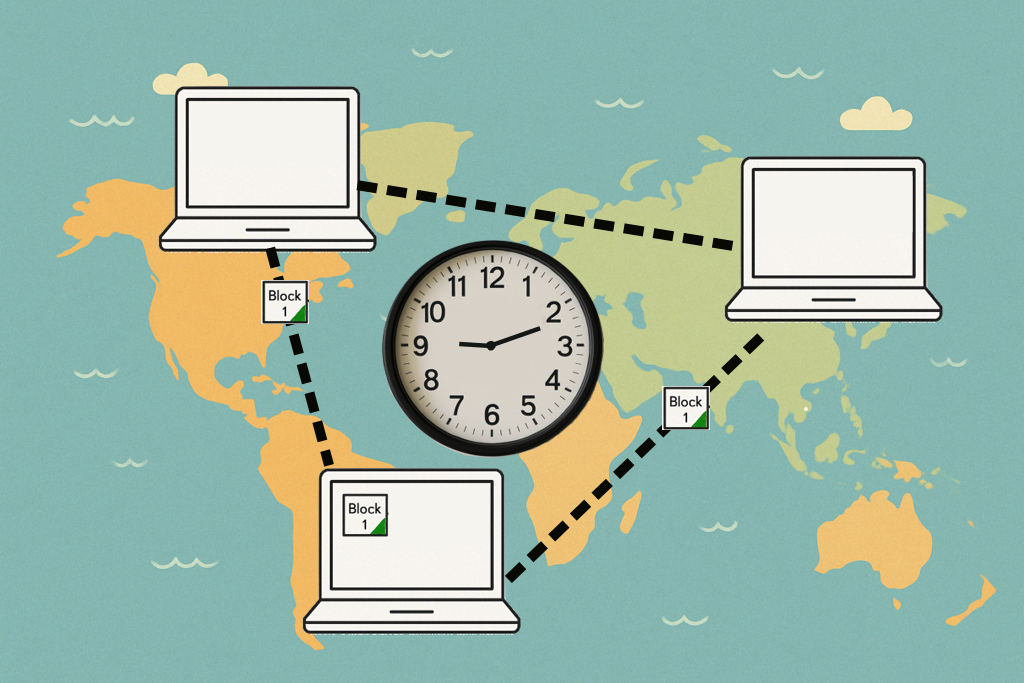
Step 4: Time is 9:11. The other two computers successfully receive the first block.
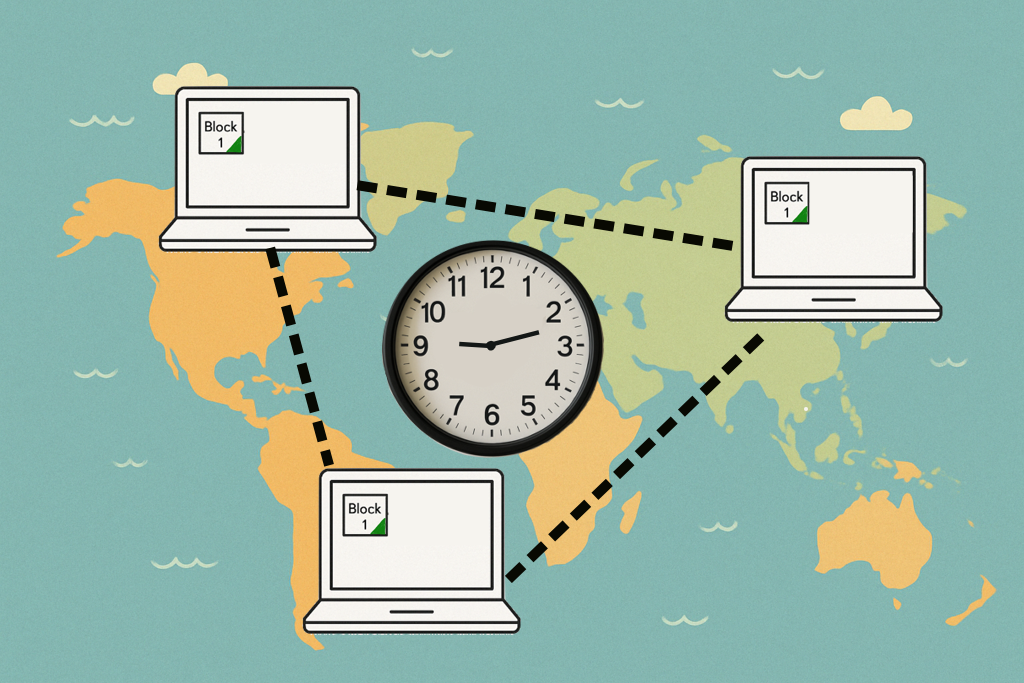
Step 5: Time is 9:20. The top-left computer finds the second block (Block 2) and broadcasts it to the others.
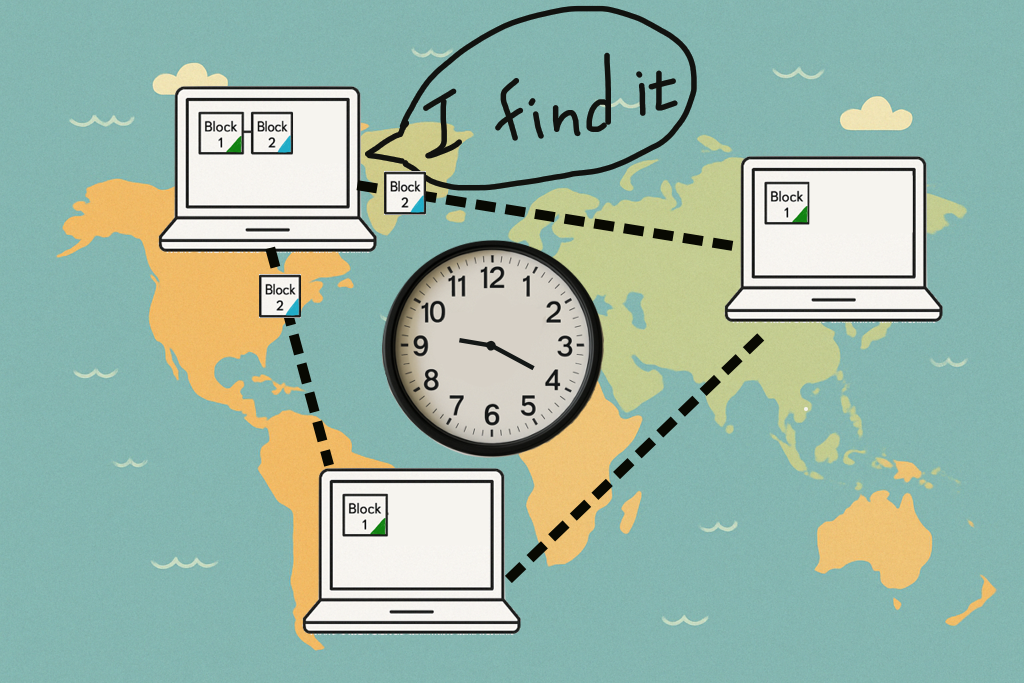
Step 6: Time is 9:21. Block 2 is being transmitted to the other computers.
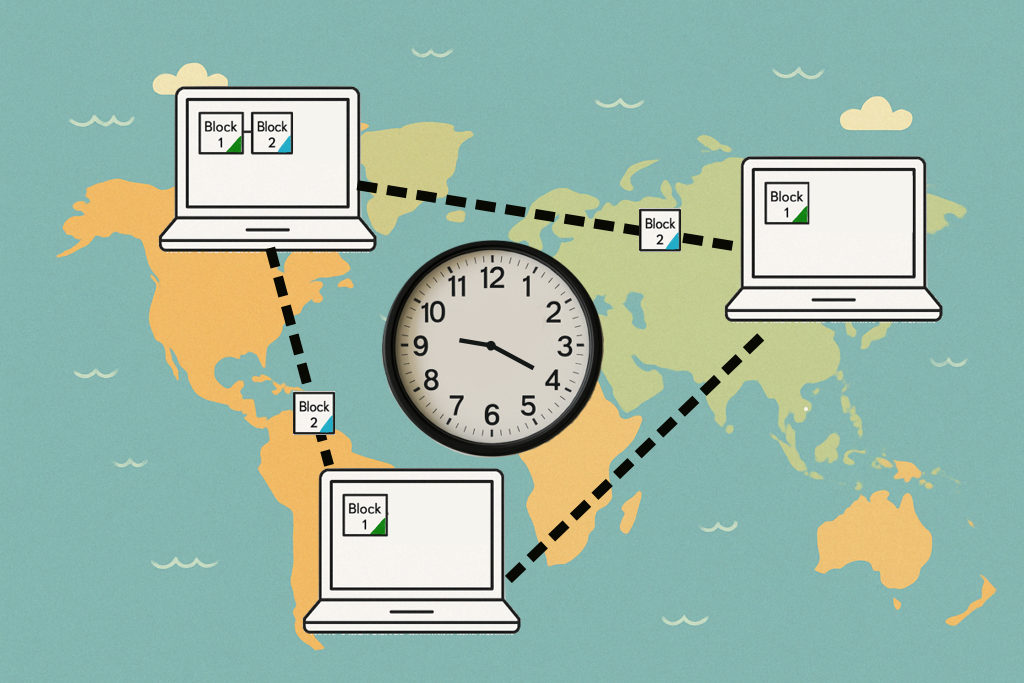
Step 7: Time is 9:21. Block 2 has been successfully received by the other two computers.
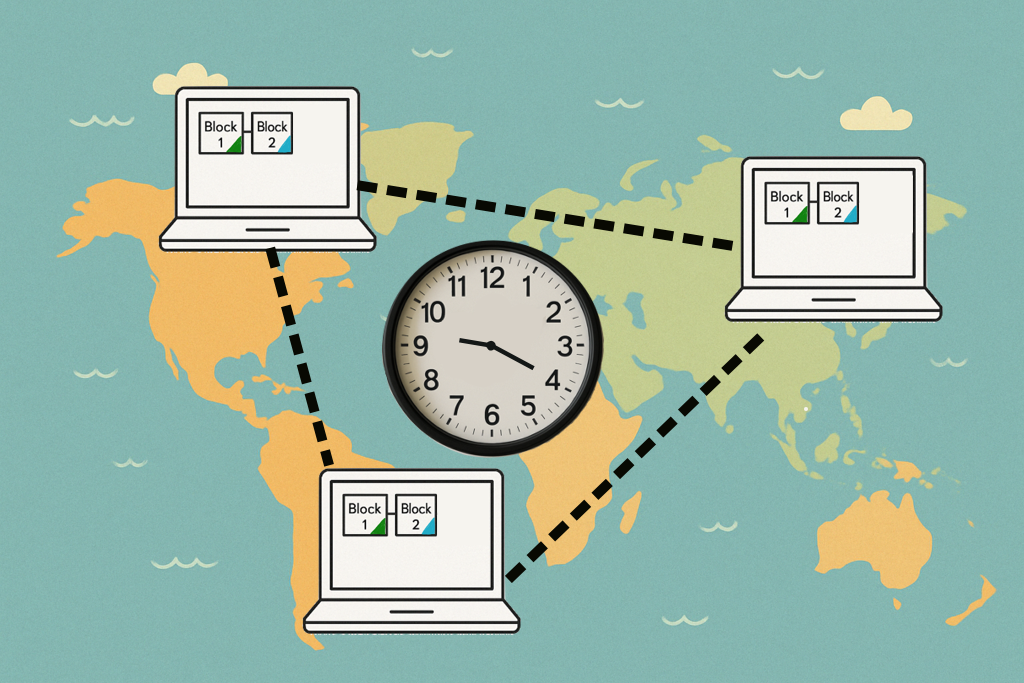
Animation:

So, the blockchain system is a system run cooperatively by all computers,
which is what gives it its decentralized nature.
You’ll also notice that the computer that finds the block broadcasts it,
so every computer stores an identical copy of the blockchain data.
As shown below: with three blocks—Block 1, Block 2, and Block 3—these blocks are effectively copy-pasted across all computers.

This design eliminates a single point of failure and ensures system stability and security.
At this point, you might be wondering: Why would these computers want to find blocks?
Is there any benefit to doing so?
Yes, there is a reward for finding a block—whoever finds the block receives 50 bitcoins.
We’ll expand on this in the next section.
Feature 2: The Computer That Generates a Block Earns a Reward
All three computers are using electricity to try and find the fourth block.
Whoever successfully finds the fourth block will receive 50 bitcoins.
And when a block is found, it is broadcast to the other computers.
Animation:
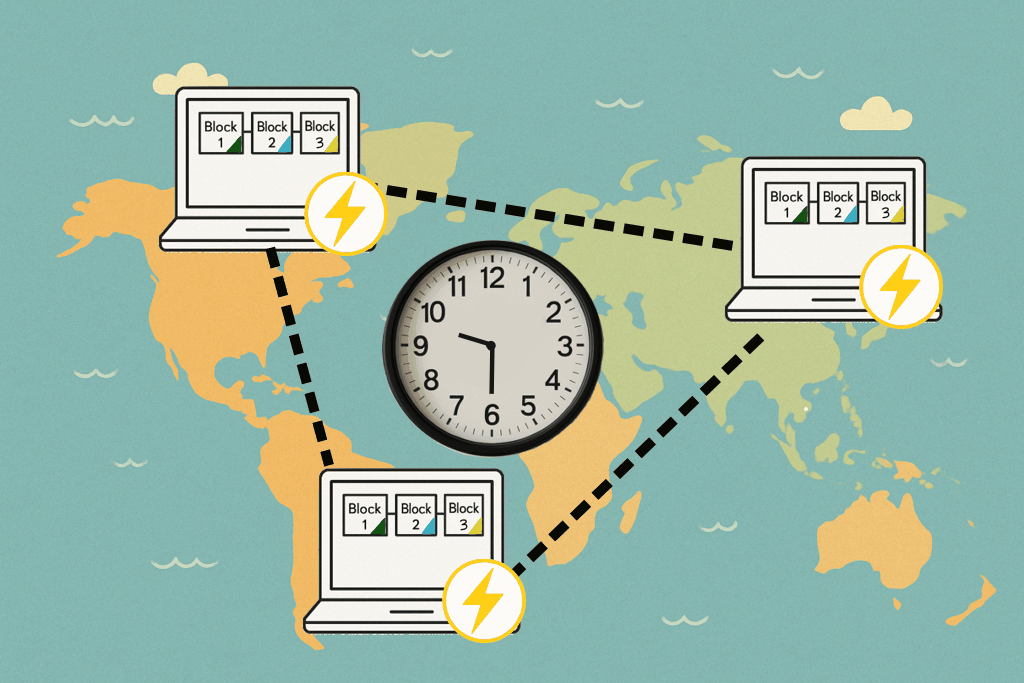
"I have a new question—what kind of data is stored in a block?"
Answer: "Each block stores the record of coin transfers, which we will explain in detail in Feature 3."
Feature 3: Each Block Contains Records of Coin Transfers
The Bitcoin system is designed to record everything that happens within it into each block.
The entire blockchain serves as the data archive of the system.
Block content includes: who mined the block, and who transferred how many coins to whom.
Note the first transfer record—originating from the system—to the miner Leo.
This is because Leo found the block, so he is rewarded with bitcoins from the system.
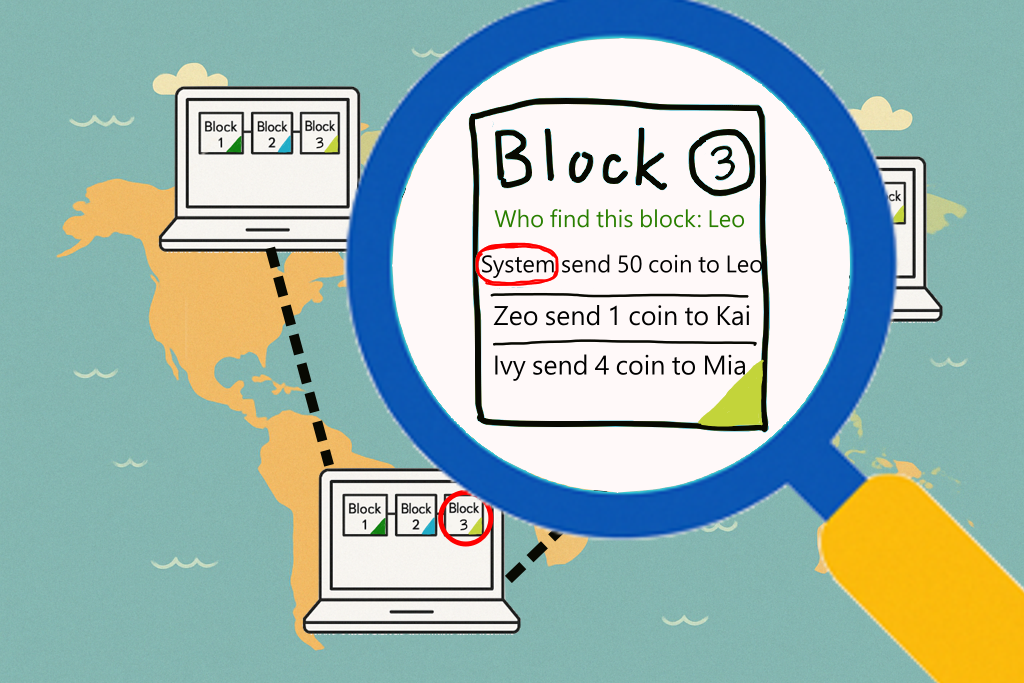
Minor Question
Q: Where did Zeo’s coin come from? Why can he send 1 coin to Kia?
A: His coin was also mined. In the Bitcoin system, all coins originate from mining rewards.
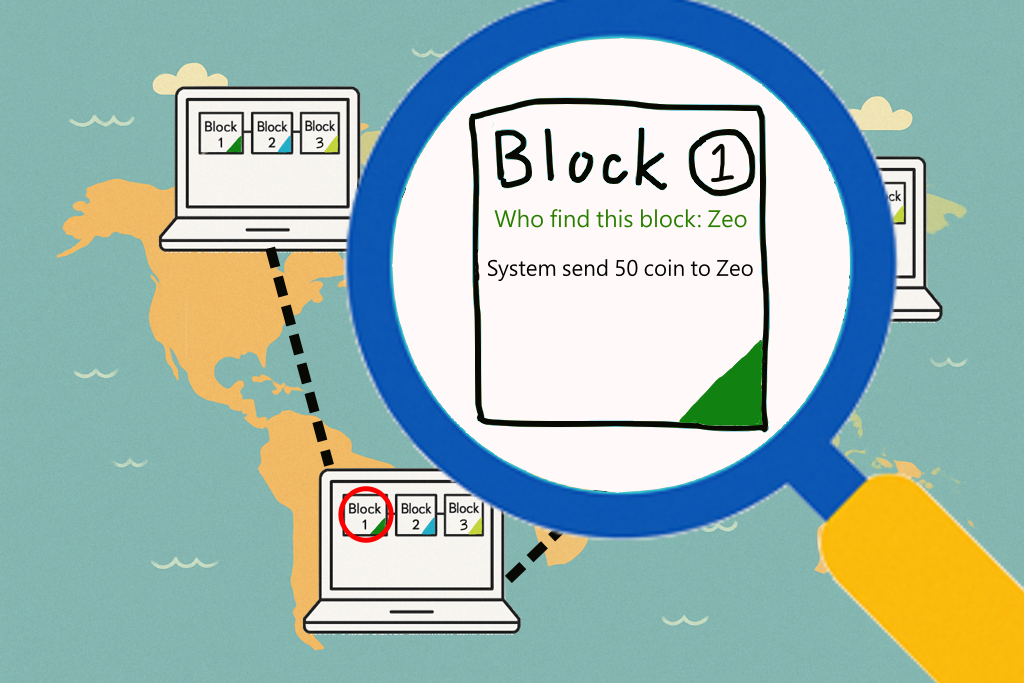
Q: Then what about Ivy’s coin? Was it also mined?
A: Let me check the blockchain... Ah, her coin was transferred to her by Zeo.
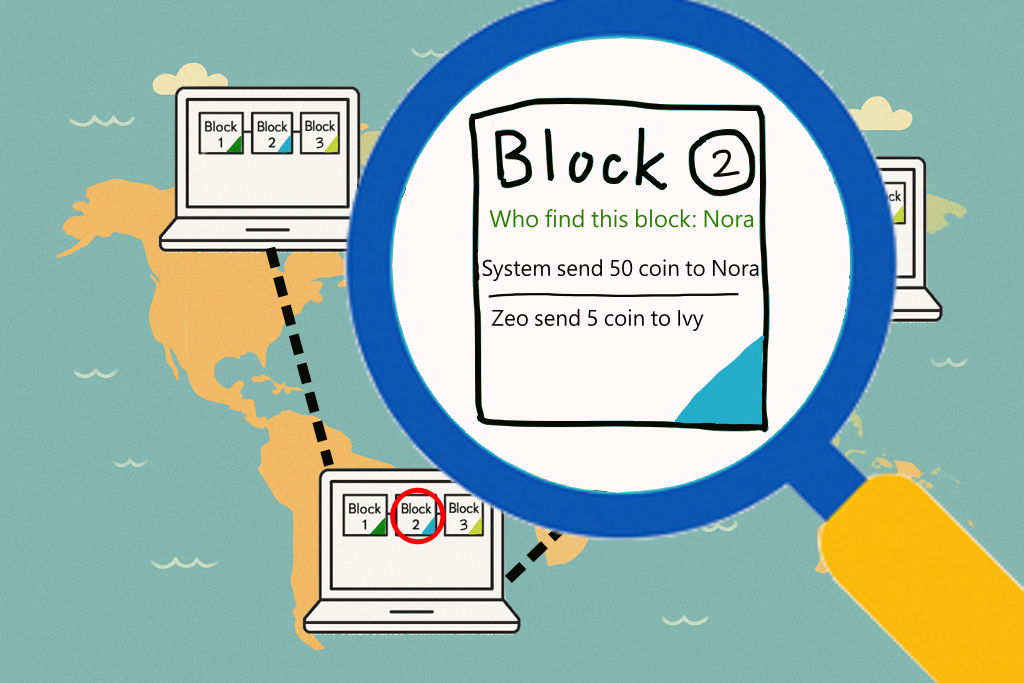
So there are only two ways to obtain bitcoins:
- By mining a block—new bitcoins are generated by the system and awarded to the miner
- By receiving coins from someone who already owns them
Summary
To sum up, the blockchain system has the following key features:
Decentralization: Every computer stores an identical copy of the blockchain. This design avoids single points of failure and ensures stability and security.
Reward Mechanism: The computer that successfully finds a new block is rewarded with coins, incentivizing more people to participate in maintaining the blockchain.
The Blockchain Serves as a Data Archive: Each block contains transaction records, allowing all activity to be tracked and verified.
These features make blockchain a secure, reliable, and decentralized data management technology,
with wide-ranging potential applications across various industries.
Q&A
Q: Isn’t it wasteful? Why must every computer store the same blockchain data separately?
A: This is crucial for decentralization. It's to avoid the risk of data loss if any one computer fails.
That’s why every computer needs to hold an identical copy of the blockchain.
Q: How many computers store Bitcoin data in 2025?
A: Around 10,000 computers currently hold a full copy of the entire Bitcoin blockchain.
To store the full blockchain, each computer needs at least 625GB of disk space.
That’s because the Bitcoin blockchain has now grown to 625GB in size.